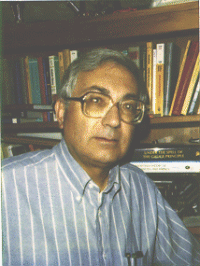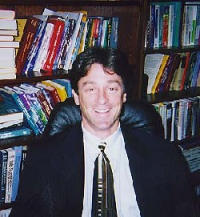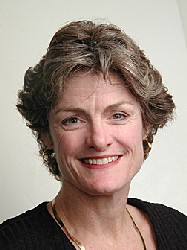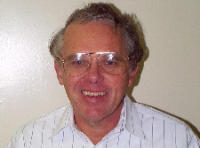
|
The Mathematical Association of America Maryland-District of Columbia-Virginia Section |
- Home
- History
- Main History Page
- Section History Document
- List of Past Officers
- Charter Members
- African-American Participation
- Stories from Section Members
- Section NExT Fellows
- Obituaries
- Smith Award Recipients
- Christensen Award Recipients
- Meritorious Service Award Recipients
- Undergraduate Award Winners
- Meeting Archive
- Past Meetings
- Talk Archive
- Old Section NExT Programs
- Newsletter Archive
- Meeting Minutes Archive
- Miscellaneous Documents
- Meetings
- Minutes
- Fall 2024 Executive
- Fall 2024 Membership
- Spring 2024 Executive
- Spring 2024 Membership
- Fall 2023 Executive
- Fall 2023 Membership
- Spring 2023 Executive
- Spring 2023 Membership
- Fall 2022 Executive
- Fall 2022 Membership
- Spring 2022 Executive
- Spring 2022 Membership
- Fall 2021 Executive
- Fall 2021 Membership
- Spring 2021 Executive
- Spring 2021 Membership
- Fall 2020 Executive
- Fall 2020 Membership
- Fall 2019 Executive
- Fall 2019 Membership
- Spring 2019 Executive
- Spring 2019 Membership
- Fall 2018 Executive
- Fall 2018 Membership
- Spring 2018 Executive
- Spring 2018 Membership
- Fall 2017 Executive
- Fall 2017 Membership
- Spring 2017 Executive
- Spring 2017 Membership
- Minutes Archive
- Newsletters
- Section NExT
- Awards
- Students
- Links
- Search
Spring 2001 Meeting at the Virginia Military Institute
The spring meeting of the MD/DC/VA Section of the MAA was held on April 20 and 21 at the Virginia Military Institute in Lexington Virginia.
Invited Addresses
Samuel J. LomonacoComputer Science & Electrical Engineering, University of Maryland Baltimore County.Invited Address: An Overview of Quantum Computation: Concept and Intuition Abstract: This talk will give an overview of quantum computation in an intuitive and conceptual fashion. No prior knowledge of quantum mechanics will be assumed. The talk will begin with an introduction to the strange world of the quantum. Such concepts as quantum superposition, Heisenberg's uncertainty principle, the "collapse" of the wave function, and quantum entanglement (i.e., EPR pairs) are introduced. This part of the talk will also be interlaced with an introduction to Dirac notation, Hilbert spaces, unitary transformations, quantum measurement. Simple examples are then given to explain and illustrate: Quantum teleportation, Shor's quantum factoring algorithm, Quantum error-correcting codes and, time permitting, Quantum cryptography. Biographical Sketch: Since 1985, Dr. Samuel J. Lomonaco has been a professor in the Department of Computer Science & Electrical Engineering at the University of Maryland, Baltimore County. He has held various industry, government and academic positions since receiving his Ph.D. in 1964. He has made numerous contributions to Mathematics (knot theory) and Computer Science (error correcting codes, factoring). Dr. Lomonaco's current research is in quantum computation where he has made advances in quantum cryptography and quantum entanglement. He is currently working on the development of new quantum algorithms based on the quantum hidden subgroup paradigm. His book entitled "Quantum Computation" (based on the AMS Short Course he organized for the January 2000 Annual Meeting of the American Mathematical Society) will be published by the AMS in 2001. 
Robert MenaMathematics Department, California State University, Long Beach and the National Science FoundationBanquet Address: The Case of the Conjecture Slain by a Deck of Cards (Borsuk's Conjecture) Abstract: Suppose we are asked to cut an object into pieces that have a strictly smaller diameter--if we are given an ellipse, we easily see that we can succeed in our quest by cutting it into two pieces (if we use the shorter axis as our cutting line). Similarly if we are given a rectangle. However, if we are given a circle, or a square or an equilateral triangle, we easily see we need to cut it into three pieces. As we try other flat (two-dimensional) objects, we see that we can always succeed by cutting the object into either two or three pieces--never needing more than three! If we now move to three-dimensional objects, again we can experiment for a while, and soon we come to the realization that we will never need more than four pieces to succeed in our quest (we do need four, for example that is the case for the tetrahedron). Naturally, we can project that for four-dimensional objects, five pieces will be the most we will ever need; and that for dimension 5, 6 pieces, etc. Indeed, Borsuk (who proved the two-dimensional case) conjectured so in the 1930's: that in dimension d, one would never need more than d+1 pieces. After several meaningful successes (including the d=3 case), the conjecture stood until the 1990's when it was proven false for infinitely many cases. We will give the smallest example available from the construction given by Kahn & Kalai. It is constructed in space of dimension d=1326. Biographical Sketch: Robert Mena is on loan to the National Science Foundation from California State University, Long Beach, where he joined the faculty in 1988. Robert is the newest addition to the Educational Systemic Reform Division of the National Science Foundation. Prior to going to California, Robert was at the University of Wyoming where he spent 15 years. During that time, he visited Ohio State and Emory University, and spent a post-doc at Caltech. He has won several teaching awards as well as the MAA Allendoerfer award--happily shared with his co-authors Dan Kalman and Shahriar Shahriari. 
Timothy Law SnyderWright Family Distinguished Professor of Computer Science, Department of Computer Science, Georgetown UniversityInvited Address: Comfortably Injecting the Learning of Writing into the Teaching of Mathematics Abstract: "How can I teach my students how to write, let alone how to do a proof?" This is a question most of us have when we approach the topic of teaching writing in our mathematics classes. Meanwhile, we struggle to understand what our students are trying to say when we grade their work. Even their non-mathematical writing often falls short of expectations. In this talk, we examine the seeds of these struggles and look at ways of examining the learning of writing without compromising traditional mathematical teaching. The process we use will have a bonus of accelerating students' abilities to think mathematically---and, yes---even design proofs. Biographical Sketch: Dr. Timothy Law Snyder is the Wright Family Distinguished Professor of Computer Science at Georgetown University. From 1995 to 1999, Professor Snyder was Georgetown's first Dean of Science. He has a passion for teaching, especially using new media (he speaks of chalk use as "cave drawing"), and helped design Georgetown's innovative Sony Scholars Program for teaching science to non-science majors. His research interests include computer music and digital signal processing; combinatorics; geometric probability; computational geometry; and airline flight safety. 
Lyn StallingsMathematics and Statistics, American UniversityInvited Address: Using Rubrics and Reflection in Mathematics Courses Abstract: This talk will provide an introduction to nontraditional assessment techniques for evaluating students' work in math courses. Techniques include rubric grading, verification or justification of solutions, writing and analysis of errors, and documentation of progress. I have found rubric grading to be more effective and more informative for evaluating students' work than the more traditional, point-assigned grading. Rubric grading provides students and teachers with specific information about the quality of students' work. The rubric I use specifically addresses each written error of every student. Since I employ a rubric in conjunction with requiring students to correct and revise errors in their written work, students have reported that rubric grading was much more informative than traditional grading scales. Students have also reported that the process of justifying or verifying their work has helped to reduce anxiety levels during tests, and has helped them to understand and learn more mathematics. The effectiveness of these techniques depends on writing activities that develop mathematical communication skills. Professors have successfully used these methods in mathematics non major and major courses. Samples of writings, rubric-graded tests, and student self-analyses will be examined. Biographical Sketch: Lyn Stallings, Associate Professor in the Department of Mathematics and Statistics at American University, coordinates the Ph.D. program in Mathematics Education. She received the MD-DC-VA Section's Distinguished Teaching Award in 1998 and the American University Award for Outstanding Teaching in 1994. Before coming to the university, Lyn taught mathematics for grades 8 through 12 in the Louisiana Public School System. She was designated the 1987 Presidential Awardee for Excellence in Mathematics Teaching for her work in training teachers to adopt innovative methods in geometry and algebra. She received her Ph.D. from the University of Southern Mississippi specializing in secondary mathematics education and research. After serving as Department Chair from 1997 to 1999, she became Associate Dean of Academic Affairs in the College of Arts and Sciences in 1999. Lyn will return to the department this fall to resume her research interests in authentic assessment, student self-evaluation, and writing in mathematics. 
William HaverDepartment of Mathematical Sciences, Virginia Commonwealth UniversityWorkshop: Grant Writing Workshop (sponsored by MAA and NSF) Abstract: The workshop is designed to meet the needs of faculty who are interested in obtaining National Science Foundation or other external support in order to improve their course or curriculum offerings. The workshop will contain information on: the availability of funding (current priorities include teacher preparation, the adaptation of new approaches being developed nationally, undergraduate courses at all levels, and community colleges); advice on how to write proposals; and technical information on preparing budgets and submitting proposals. While anyone is welcome to attend, the workshop will focus on the needs of those who have written no or few successful national proposals. Teams of faculty from an institution are particularly welcome. Biographical Sketch: Bill Haver is Professor of Mathematics at Virginia Commonwealth University where he served as chair of the Mathematical Sciences Department for 13 years. In the early 1990s he was a program officer (rotator) in the Division of Undergraduate Education of the NSF full-time for two years and part-time for another three years. Currently he is a member of the MAA Committee on the Undergraduate Program in Mathematics (CUPM). His major curriculum interests are in the preparation of mathematics teachers at all levels K - 12, and the offering of appropriate mathematics courses for students majoring in non-mathematics intensive areas. |
Copyright © 2012 - The Mathematical Association of America
Please send comments, suggestions, or corrections for this page to Brian Heinold at heinold@msmary.edu
Last Modified: 03/05/2012 - 09:16pm